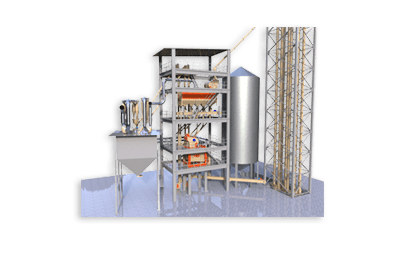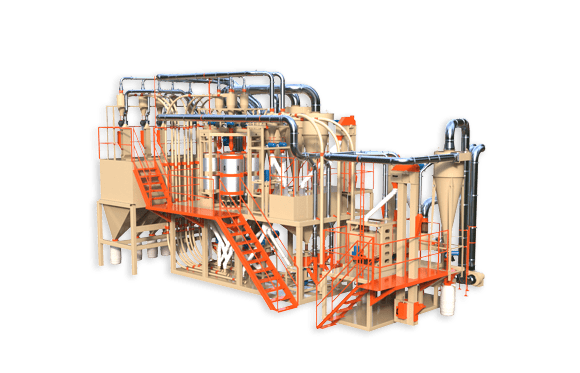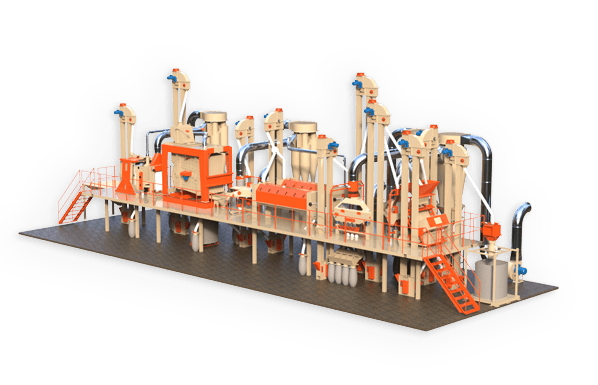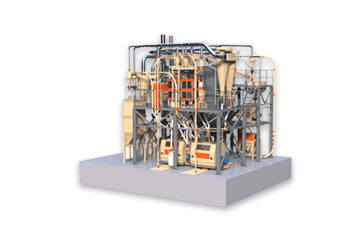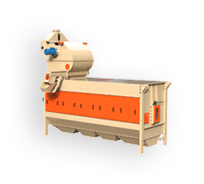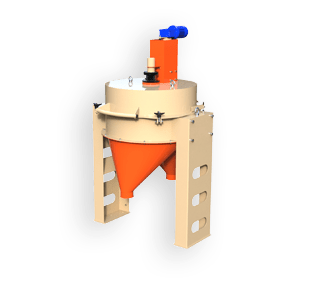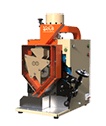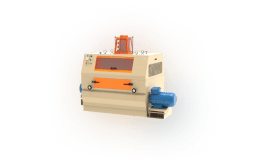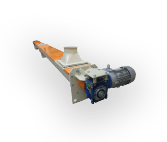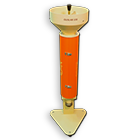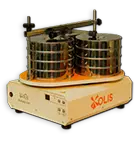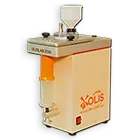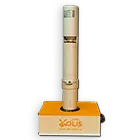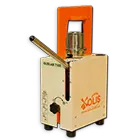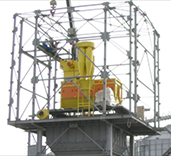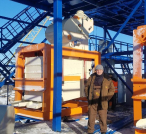Market perspectives of technical policy for grain processing
Vereshchynsky A.P., Ph.D.
Catalog LTD OLIS 2005.
One of the main conditions for success of any production is its technical equipment. However, in most industries there are many examples where highly equipped production are giving way to the market companies with lower potential is due to technical reasons. These industries currently include and processing of grain, where a large proportion of industrial capacity is idle systematically. In this case, it is no secret that the agricultural millers producing about half of all produced flour and cereals. This situation illustrates the fact that the technical policy be created or already existing company may not be limited only by the level of its equipment. In our opinion, there is the question format of production, understood as a set of interrelated technical elements (the depth of processing and power consumption, wide range and power in each of its sectors, the extent of providing communications, and control processes, etc.), linked to the system of unified marketing goals and objectives. Accordingly, the technology policy should focus on ensuring that the format of production, which would best correspond to the market prospects of the company. Domestic grain processing and works long enough, apparently, will work in the absence of stability. But most importantly – it is the limited extent of implementation of the only truly reliable partner – a saturable domestic market. It is quite clear that in this situation the structure of grain processing will be presented to dozens of productions on a national scale, supported by government contracts with corporate “bound” to large customers and a number of regional-scale industries, prevailing in a total volume of production.
Grain processing, in terms of economic feasibility, gravitate to the places of production of grain, are also places of accommodation cheap production space and manpower. However, the implementation of its products are aimed at the production of large urban consumers. Given the continuing growth of transport costs, these trends will be exacerbated. In addition, the establishment of effective grain processing industries, taking into account their level of technical complexity and capital intensity is quite “in the teeth” of regional business. Therefore, trade in Odessa, for example, Kiev flour indicates not so much about the success of the Kiev millers, as the sluggishness of the Odessa regional business.
Thus, the objective of the overwhelming number of companies will provide regional leadership in equal conditions of competition. The format of such productions should provide as a minimum: “maneuvering” in several “strong” position range, strict cost minimization of energy and raw materials, timely response to changing market conditions and rapid seed produces product categories. At least the immediate future of domestic flour millers is viewed today is so. The specified path will probably be the most natural and rational if for the sake of someone’s private interests of the force will not be imposed on any other form.
Consider what kind of operating plants more suited to the requirements specified above?
In our opinion, the existing mills and groats-shop in accordance with their equipment can be divided into three groups:
A. Industrial companies selling complex schemes of processing power, as a rule, more than 100 tons per day.;
B. Manufacturing, processing for conducting a reduced schemes using industrial equipment, power, mainly do100t/day.;
B. Mills and groats-shop low power to individual circuits and equipment.
Enterprise Group A in the vast majority are legacies of the past regime. Such productions are based on the circuits and equipment (including a “reproducible”), developed by more than half a century ago. However, the moral and physical wear and tear is not a major obstacle in their work. The enterprise in question were created in a different politico-economic environment, to achieve their marketing goals, no specific market conditions. For his claim to the national standards for quality and high availability of raw materials “are forced to pay for the production of high energy intensity, the inertia of” large-tonnage, high operating costs. The reason of this is over-saturation of the technologies used equipment, aids and communications, which is the main negative feature introduced here and there and still traditional solutions.
Production of group B developed mostly after the restructuring, but today they produce more than half of flour and cereals. Mini-industries characterized by small investment to build, low cost processing and flexibility, yet ensures that in some places their competitiveness. However, the vast majority of these plants are extremely primitive scheme, hastily equipped with the same primitive machines, manufactured, oddly enough, most of the industries and factories. The owners of these “powers” are faced with worsening to the extent of market saturation intractable problems out, and especially the quality of products, which is typical handicrafts. Moreover, most of the enterprise in question is below the minimum performance that does not allow to organize and conduct a full process, laboratory controls and accounting. It seems that the formation of an entire industry called “agricultural millers” passed without the participation of scientists and millers.
Intermediate position between the considered groups of enterprises occupy emerged relatively recently few of production, which are created by “truncation” of traditional recycling schemes and staffed by domestic and foreign industrial equipment. Experience of operating Ukrainian processors such facilities (including those that are produced by foreign firms) shows that their authors do not have sufficient knowledge and experience in the creation of such productions. Constructed on the basis of assumptions mills and groats-shop immediately demanded major improvements and adjustments. Nevertheless, given the production, in most cases managed to bring up such relations function, energy and quality that gives them significant advantages over the enterprises of the groups A and B.
This analysis allows us to consider the enterprise group B as the main contenders for regional leadership. However, most of the productions of A, which will not be included in a number of manufacturers on a national scale, as well as some businesses in the group who “outgrow” the local market will be “formatted” at the regional level. These processes will lead the inevitable need for technical re-equipment of production of A and B and outfitting business group B.
Creation of production did not exist before the format by “tailoring” of the equipment within the scheme is not peculiar to them and the cargo can not be a progressive way of development. A truly high-performance production, as production of the new format, require the development of appropriate technology, circuits and equipment. It is true that such work should be carried out with maximum use of domestic and foreign knowledge and experience, until use, where warranted, existing technology and machinery.


